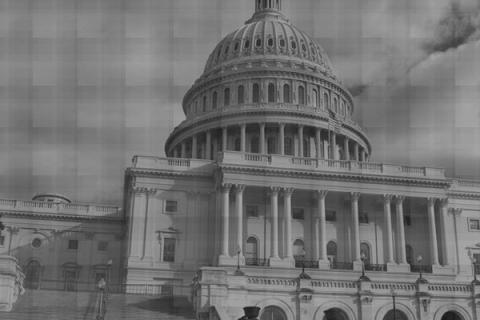For eight years following the 9-11 terrorist attacks, the singular narrative and driving issue behind public policy in America was national defense and the Global War on Terrorism. In the final months of the Bush Administration, however, disillusioned from body counts and slow progress in two wars that were supposed to be short and decisive, the American people turned their attention to the fiscal disaster happening in Washington and many of America's state capitols.
The advent of the Tea Party movement transformed the narrative, and the single biggest issue of our era is now fiscal responsibility. Even the Democrats' entitlement expansion, referred to pejoratively by critics as "ObamaCare," was sold to the American people as an absolutely necessary cost-cutting measure that would reduce the federal deficit. In California, proponents of legalized cannabis didn't sell legalization as a civil liberties issue, but called their iniatiative the "Tax Cannabis Act" and emphasized the revenues that legalized cannabis could generate for California's struggling state and local budgets.
Now fiscal conservatives looking for solutions to budget problems in many of the fifty U.S. states can no longer ignore the pressing need for comprehensive prison reform. Many U.S. prisons will have to adapt, work hard to lower rates of recidivism, and release some non-violent inmates from their over-crowded facilities. States like California can either make these reforms now, in a calculated and orderly manner, and while maintaining public safety as a top priority, or they will be forced to make them later- hurriedly and in a state of crisis- after simply running out of money and willing lenders.
In late February, the LA Times reported that Republicans in the California legislature are taking a hard-line stance against Gov. Jerry Brown's plan to extend tax hikes. If they are serious about cutting the state's critical budget deficit without raising taxes, Republicans will have to support steep spending cuts, and the state's exploding prison costs are ripe for the slashing. Many self-styled fiscal conservatives are taking notice. In a Washington Post op ed this January, Newt Gingrich and former California State Assembly Leader, Pat Nolan make an eloquent case for comprehensive prison reform as "a smart way for states to save money and lives." They wrote:
"We urge conservative legislators to lead the way in addressing an issue often considered off-limits to reform: prisons. Several states have recently shown that they can save on costs without compromising public safety by intelligently reducing their prison populations."
While pointing out a harrowing statistical trend: that "the prison population is growing 13 times faster than the general population," Gingrich and Nolan use one comparison to show that incarcerating more people does not necessarily translate to lower rates of crime or safer communities:
"Compare Florida and New York. Over the past seven years, Florida's incarceration rate has increased 16 percent, while New York's decreased 16 percent. Yet the crime rate in New York has fallen twice as much as Florida's. Put another way, although New York spent less on its prisons, it delivered better public safety."
Essentially, by adopting a creative, courageous, and qualitative approach to detention and corrections, states can save money and deliver a better result than by employing an inefficient, quantitative, "results-by-volume" approach. Conservative preacher and icon, Pat Robertson made these same points this last December, when he criticized U.S. drug policy along with the trend of sharply increasing rates of incarceration in the United States. Robertson said to his television audience:
"He's tough on crime, tough on crime, lock 'em up! You know and that's the way these guys ran and they got elected, but that wasn't the answer."
This recent turn of events in the politics of public safety and fiscal policy has been anticipated for years according to William DiMascio, executive director of the Pennsylvania Prison Society, who wrote this February:
"For years in the world of prison reform, people said meaningful change would not occur until politically conservative policymakers made it happen. The driving force, they said, would be money."
Like Gingrich and Nolan, DiMascio argues that creative state programs and policies can cut prison costs while actually making the public more safe. He gives multiple examples like this one:
"The Correctional Education Association conducted a study for the U.S. Department of Education using 3,600 former prisoners from Maryland, Minnesota and Ohio. The finding showed that 'simply attending school behind bars reduces the likelihood of reincarceration by 29 percent. Translated into savings, every dollar spent on education returns more than two dollars to the citizens in reduced prison costs.'"
The question is, will prison reform activists be able to persuade legislators to take immediate and decisive action to reform California's prisons and as a result, California's budget? The indications are strong that their best chance will lie in explaining how comprehensive prison reform is absolutely necessary to California's fiscal solvency.

